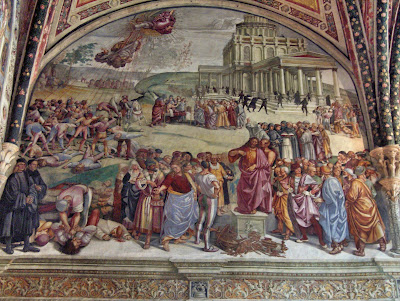The denouement is taking forever, but with Tubby "getting there" is the thing: I saw everything through a veil: the streets, the people moving with us or coming toward us. Voices, the noise of carriages I heard as in a dream, and suddenly found myself sitting at a table by the window in the Golden Arms, with Tubby Schaumann sitting down beside me. Huffing and puffing and then taking a deep breath he said with a sigh, "There!" and after a while, "Well, well, well, well, who killed Cock Robin?" * And who is Cock Robin? There are a few possibilities: http://en.wikipedia.org/wiki/Cock_Robin * And what is an English rhyme doing in a German novel? The rhyme isn't in Tubby, just the allusion. Apparently "versions" of the story exist in other countries, including Germany. * The "long version" of the English rhyme: Who killed Cock Robin? I, said the Sparrow with my bow and arrow, I killed Cock Robin. Who saw him die? I, s









